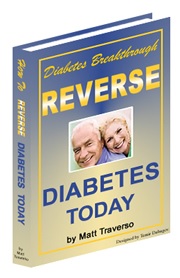An Introduction to Diabetes - The Basics
By Donovan Baldwin
Diabetes is not as bad a health problem as it once was, yet, even so, it is still a killer of thousands of people a year. It is a disease characterized by
chronic high levels of glucose in the blood. Up until the end of the 19th century, it simply meant a slow, painful for most who contracted it.
Sugar in the blood in the form of glucose, and, excess glucose can have a number of bad effects on health, including poor healing of cuts, kidney damage, even coma. With the advancement of monitoring
and insulin delivery methods, diabetes treatment is often now little more than another daily task to perform.
 Though the underlying causes are still not fully understood, diabetes
either results from too little insulin being produced or ineffective use of it by the body. In Type 1 diabetes,
for example, the islet cells of the pancreas fail to produce an amount of insulin adequate to allow blood glucose to enter cells where it's
used for energy. In Type 2 diabetes, the cells may resist insulin's action (hence the term "insulin resistance"), once
again leaving too much glucose in the blood. Though the underlying causes are still not fully understood, diabetes
either results from too little insulin being produced or ineffective use of it by the body. In Type 1 diabetes,
for example, the islet cells of the pancreas fail to produce an amount of insulin adequate to allow blood glucose to enter cells where it's
used for energy. In Type 2 diabetes, the cells may resist insulin's action (hence the term "insulin resistance"), once
again leaving too much glucose in the blood.
This excess blood sugar will ultimately be stored as fat.
Though the entire range of cause and effect are not completely known, experts agree that the causes of the different types of diabetes are
generally going to be a combination of genetic predisposition and environmental or lifestyle factors. In most cases, one may
dominate, though more than one are often present.
Gestational diabetes, for example, affects about 3% of pregnant women usually from around 24-28 weeks into term. But it goes away after birth. Type 1 diabetes, on the other hand, affects mostly juveniles and is largely genetic.
In all cases, however, the symptoms are usually roughly the same:
excessively frequent urination, unquenchable thirst, sometimes
accompanied by dizziness or stomach pains. Naturally, these common
symptoms can also have a number of less deadly causes. This makes it
important that anyone suspecting he or she has diabetes should be tested by a physician.
Fortunately, those tests are simple and relatively painless, generally
only requiring a small blood sample. In fact, my wife had one today.
The purpose of the test is to measure blood glucose level,
with normal results running around 99 mg/dL, while diabetics have a
level of 126 mg/dL or above.
Although it sounds simple, it sometime requires more than one test to confirm the disease.
Once confirmed, however, regular blood glucose monitoring is a must.
Fortunately, there are today many convenient ways to do that. Testing
devices the size of a cell phone are common. A small sample of blood is
smeared on a strip fed into the instrument, which delivers a number
within seconds. Some recent devices measure glucose level through the
skin using an infrared beam.
Today's treatments are equally easy for most diabetics. In some cases
careful diet and appropriate exercise may be enough to keep the right
glucose-insulin balance. In the usual case, insulin delivery of some
kind is called for. But that too is much easier than in generations
past. Small insulin-containing pens can deliver the exact right dose
painlessly. Newer oral inhalers that have met with success are now on
the market.
Though, obviously, no one wants to have to deal with diabetes, managing
the disease is now easier than ever. The possible long term
complications of untreated diabetes remain what they always were. By
keeping them at bay with simple techniques, most diabetics can enjoy an
active fulfilling life just as anyone else.
For those who suffer from Type II diabetes, it may be possible to Reverse Diabetes.
---------------------------------------------
Donovan Baldwin is a freelance SEO copywriter residing in the Dallas - Fort Worth, Texas vicinity,
and a University of West Florida alumnus. He is a past member of Mensa and is retired from the U. S. Army after 21 years of
service. In his career, he has held many managerial and supervisory positions. However, his main pleasures have long been
writing, nature, health, and fitness. In the last few years, he has been able to combine these pleasures by writing poetry and articles on
subjects such as health, fitness, weight lifting, yoga, weight loss, the environment, global warming, happiness, self improvement, and life. His blog on senior health and fitness may be found at http://fitness-after-40.ws.
---------------------------------------------
While I do not normally recommend diets themselves, healthy eating is
important to any health, fitness, or weight loss program. Click Here
to learn more about Diet To Go meals.
P. S. If you want to learn more about why Diets Don't Work, please click here.
If you want to learn how to burn fat, a great book to read is Burn the Fat, Feed the Muscle by Tom Venuto
|